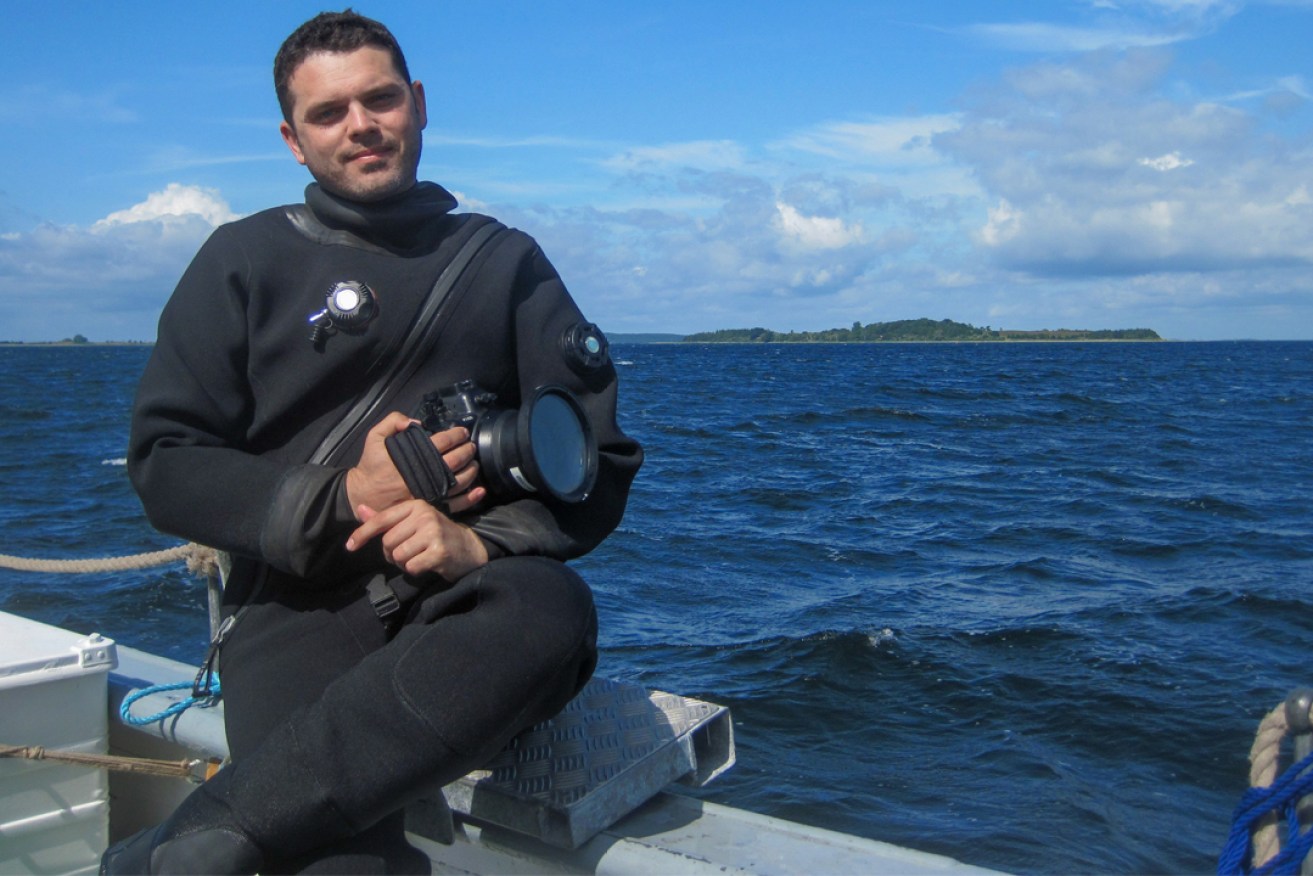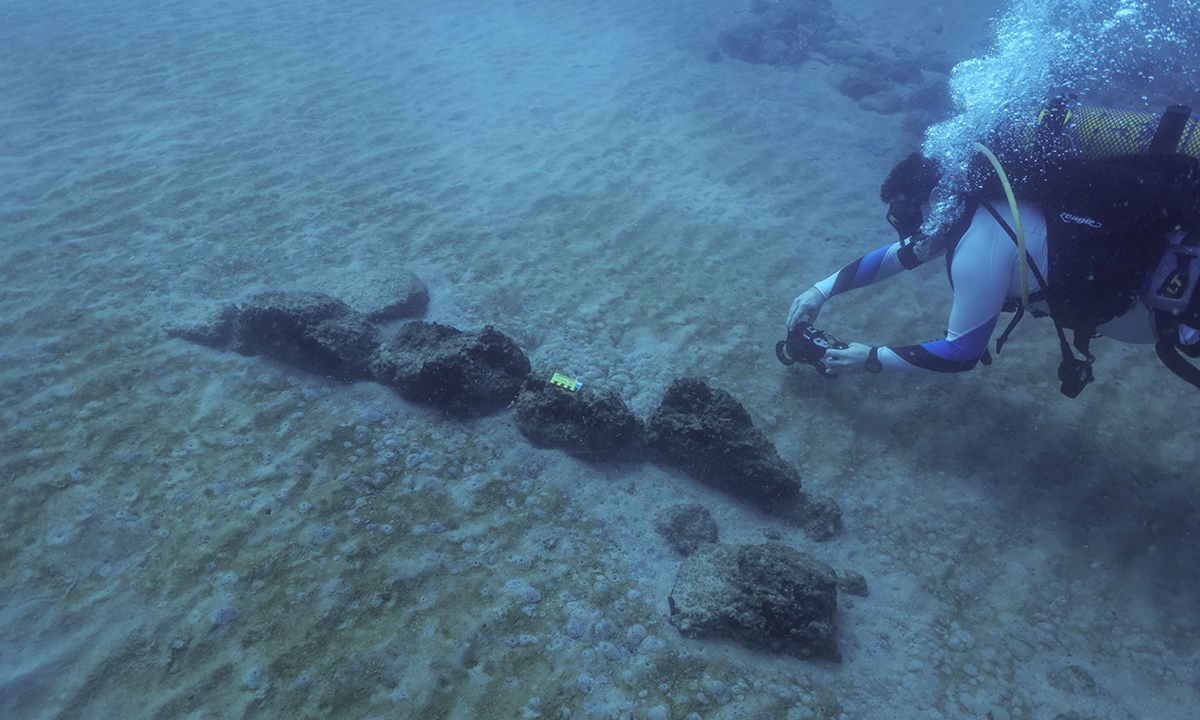Diving into Australia’s lost landscapes
Could the submerged secrets of the Pilbara coast provide insights into past climate change?

Archaeologist Dr Jonathan Benjamin prepares to record a submerged Mesolithic site in the shallow waters of Denmark, Baltic Sea. Photo courtesy John McCarthy (Flinders University).
The sunken landscape archaeology off the far north West Australian coast holds a rich array of untapped knowledge about past sea-level rise, population resilience, mobility and diet – and could be the key to better understanding climate change and its impacts today.
It’s an intriguing question researchers from Flinders University are hoping to address, and so influence heritage and environmental management and the marine heritage sector.
Dr Jonathan Benjamin, a Lecturer in Maritime Archaeology at Flinders, is leading a team that has secured a $597,000 Australian Research Council (ARC) grant to investigate the records of the now-submerged Pilbara coast.
“This is the first systematic underwater archaeological project to evaluate Australia’s continental shelf for late Pleistocene and early Holocene archaeological deposits some 50,000 to 7,000 years ago when nearly one-third of Australia’s land mass was drowned after the last Ice Age, and sea-level change displaced generations of people,” Dr Benjamin says.
“We see this as a starting point for a generation of research in this hugely important and emerging discipline which will evaluate the 30% of Australia which is now under water.”
“Our project builds on experience from our international colleagues and will develop a suite of methods to investigate submerged archaeological features, including settlement sites, food production sites such as shell middens, and the surrounding palaeo-environments where humans used to live, but which are now submerged.”
“It is an incredibly exciting prospect to begin to study the maritime archaeology of pre-European indigenous Australia and reshapes maritime archaeology in this country, which has been historically focused on European contact, historical migrations and modern material culture,” Dr Benjamin says.
“This will help to expand maritime archaeology to include all aspects of people and the sea in the past, as far back – potentially – as the arrival of the first Australians.”

Recording the relics of a 9,000 year old Neolithic village at 10m water depth in the eastern Mediterranean Sea. Photo courtesy Dr Ehud Galili (Haifa University).
As co-chair of the UNESCO UNITWIN Network for Underwater Archaeology, Dr Benjamin is a specialist in underwater archaeology and the archaeology of submerged prehistoric landscapes.
He has not only conducted archaeological research in Britain, Slovenia, Croatia, Cyprus, Israel, Denmark, the US and Australia but is an expert in diver-based photographic and photogrammetric recording of underwater archaeological sites.
The new ARC project will be done in collaboration with researchers at Aarhus University, Denmark; Airborne Research South Australia Ltd; Curtin University of Technology; James Cook University; The University of Western Australia; and University of York, England.
It’s just one of several fascinating Flinders projects to win funding – from research into bug eyes to help us avoid crashing our cars, to an ingenious vortex device that could reduce manufacturing waste.
Dr Karin Nordström, Flinders School of Medicine, awarded a $325,000 grant to explore the world of tiny fly eyes to better understand the behavioural, neural, and computational mechanisms underlying the visualisation of moving targets. The research is in collaboration with Associate Professor Paloma Gonzalez-Billido, Cambridge University.
Professor Julian Meyrick, Strategic Professor of Creative Arts at Flinders, will lead a $465,000 research project to improve the existing AusStage open-access live performance database. The truly national project involves researchers from 12 Australian universities and four arts organisations.
Associate Professor Jane Haggis – with Griffith University, Sheffield Hallam University, and The University of Adelaide – leads a $333,500 ARC study of religion as a dimension of international affairs between 1860 and 1950.
Professor Colin Raston, inventor of the Flinders Vortex Fluidic Device famous for unboiling an egg, has won a $575,000 to improve chemical and biochemical processes and develop cleaner and faster ways of preparing complex molecules. The research project includes fellow Flinders chemist Dr Justin Chalker, Professor Gregory Weiss from University of California Irvine and Dr Keith Stubbs from the University of WA. Professor Raston also secured $376,500 to develop continuous flow thin film microfluidic device technology to gain access to carbon nano-material.





